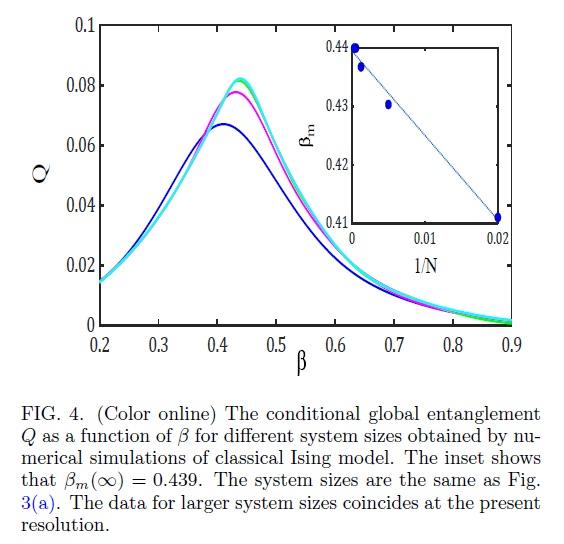Elahe Samimi, Mohammad Hossein Zarei, and Afshin Montakhab
Phys. Rev. A 105, 032438 – Published 23 March 2022
ABSTRACT
A useful approach to characterize and identify quantum phase transitions lies in the concept of multipartite entanglement. In this paper, we consider well-known measures of multipartite (global) entanglement, i.e., average linear entropy of one-qubit and two-qubit reduced density matrices, in order to study topological quantum phase transition (TQPT) in the Kitaev Toric code Hamiltonian with a nonlinear perturbation. We provide an exact mapping from aforementioned measures in the above model to internal energy and energy-energy correlations in the classical Ising model. Accordingly, we find that the global entanglement shows a continuous and sharp transition from a maximum value in the topological phase to zero in the magnetized phase in a sense that its first-order derivative diverges at the transition point. In this regard, we conclude that not only can the global entanglement serve as a reasonable tool to probe quantum criticality at TQPTs, but it also can reveal the highly entangled nature of topological phases. Furthermore, we also introduce a conditional version of global entanglement which becomes maximum at the critical point. Therefore, regarding a general expectation that multipartite entanglement reaches maximum value at the critical point of quantum many-body systems, our result proposes that the conditional global entanglement can be a good measure of multipartite entanglement in TQPTs.

